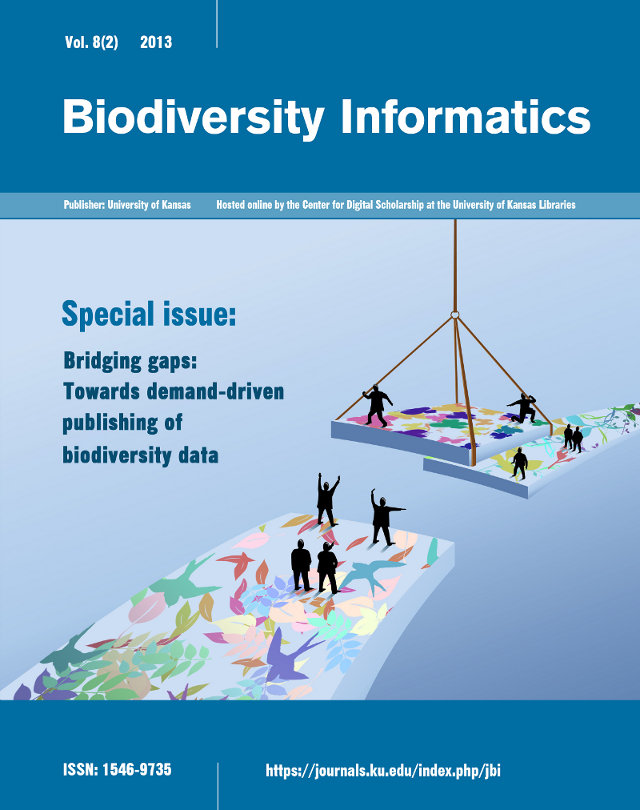Assessment of user needs of primary biodiversity data: Analysis, concerns, and challenges
DOI:
https://doi.org/10.17161/bi.v8i2.4094Keywords:
Content Needs Assessment, primary biodiversity data, statistics, surveyAbstract
A Content Needs Assessment (CNA) survey has been conducted in order to determine what GBIF-mediated data users may be using, what they would be using if available, and what they need in terms of primary biodiversity data records. The survey was launched in 2009 in six languages, and collected more than 700 individual responses. Analysis of the responses showed some lack of awareness about the availability of accessible primary data, and pointed out some types of data in high demand for linking to distribution and taxonomical data now derived from the GBIF cache. A notable example was linkages to molecular data. Also, the CNA survey uncovered some biases in the design of user needs surveys, by showing demographic and linguistic effects that may have influenced the distribution of responses received in analogous surveys conducted at the global scale.Metrics
File downloads
5,329
Downloads
Downloads
Additional Files
Published
2013-07-09
Issue
Section
Articles (peer-reviewed)
License
Copyright for articles published in this journal is retained by the authors, with first publication rights granted to the journal. All articles are licensed under a Creative Commons Attribution Non-Commercial license.
Competing Interests: The authors have declared that no competing interests exist.
How to Cite
Ariño, Arturo H., Vishwas Chavan, and Daniel P. Faith. 2013. “Assessment of User Needs of Primary Biodiversity Data: Analysis, Concerns, and Challenges”. Biodiversity Informatics 8 (2). https://doi.org/10.17161/bi.v8i2.4094.

